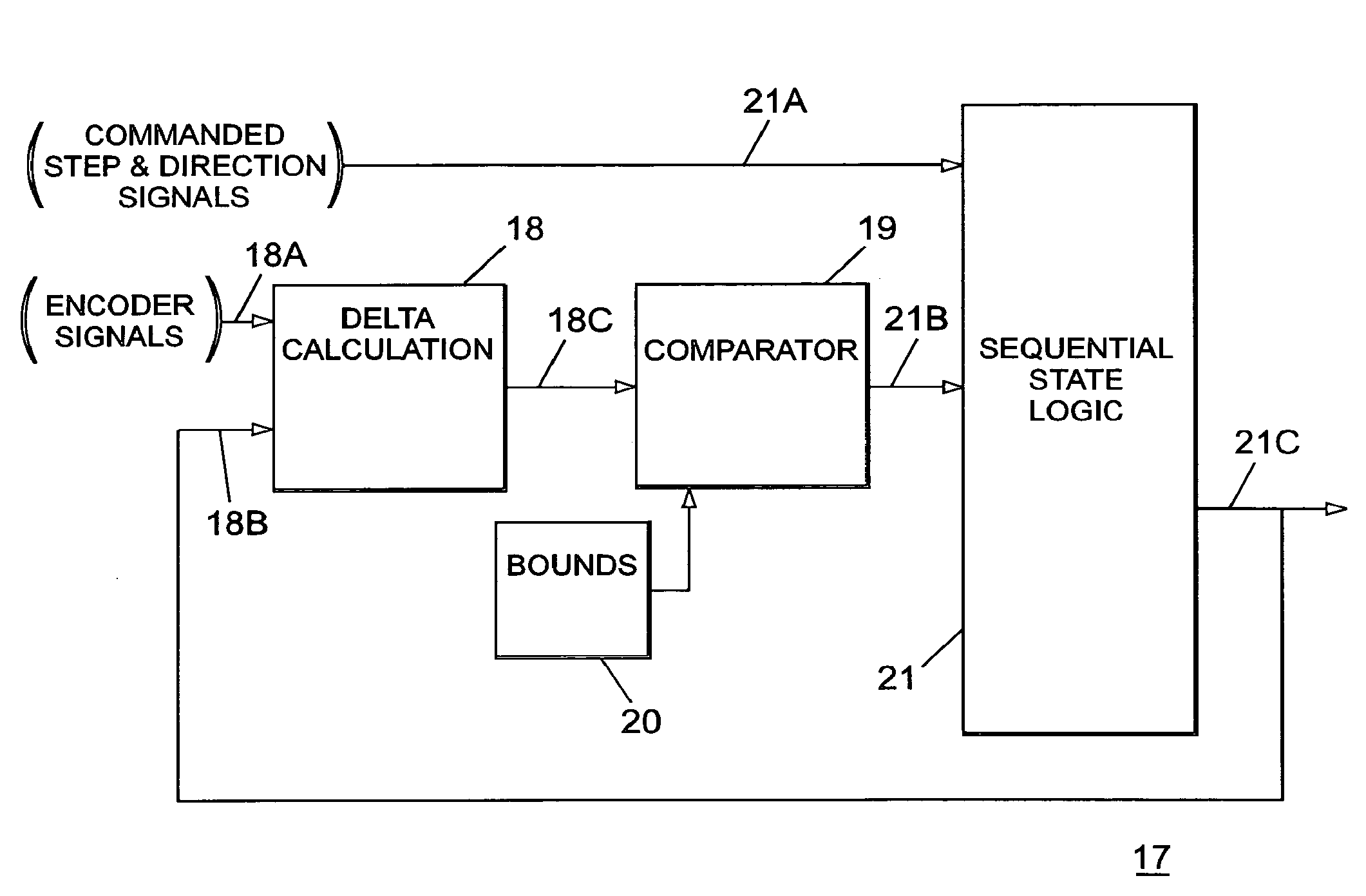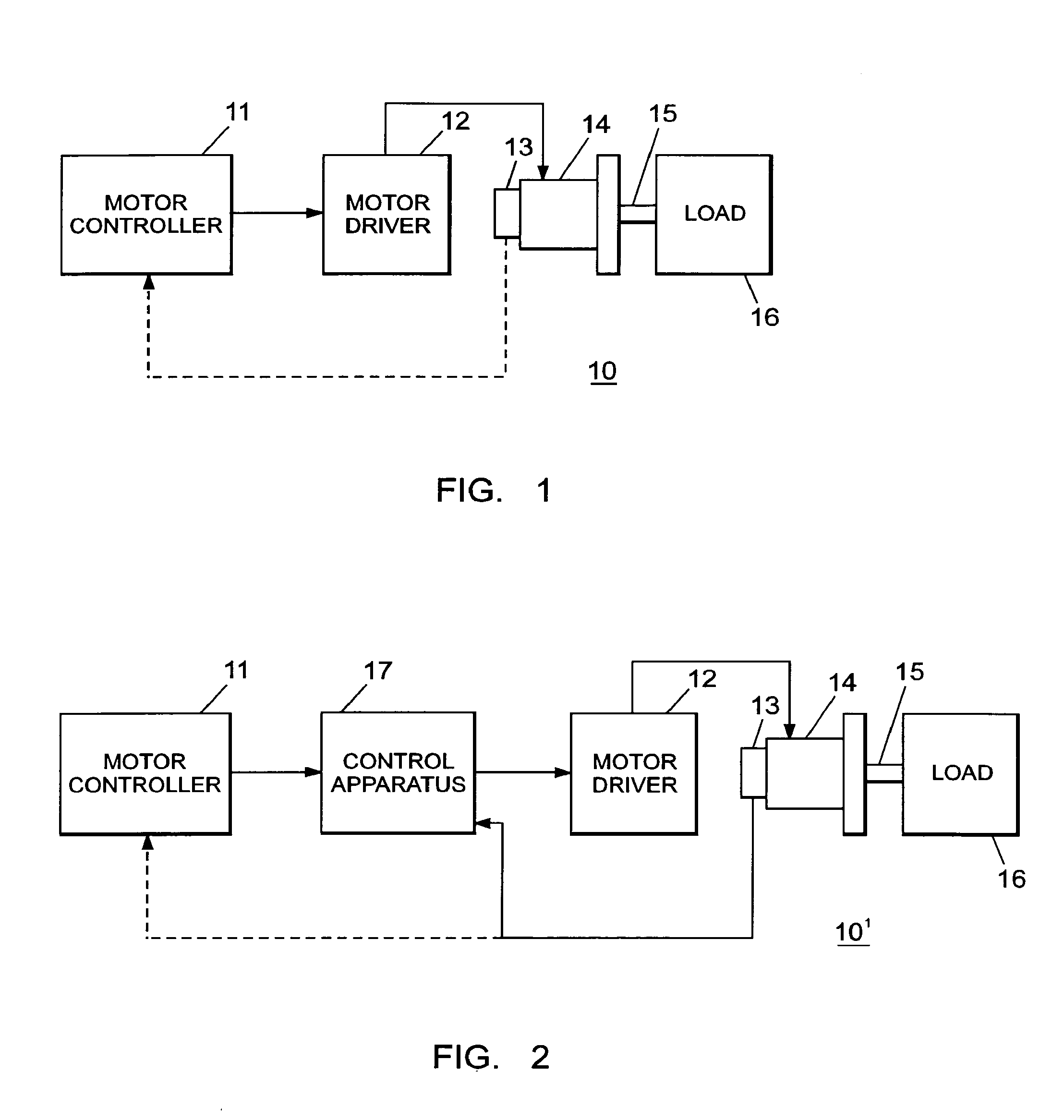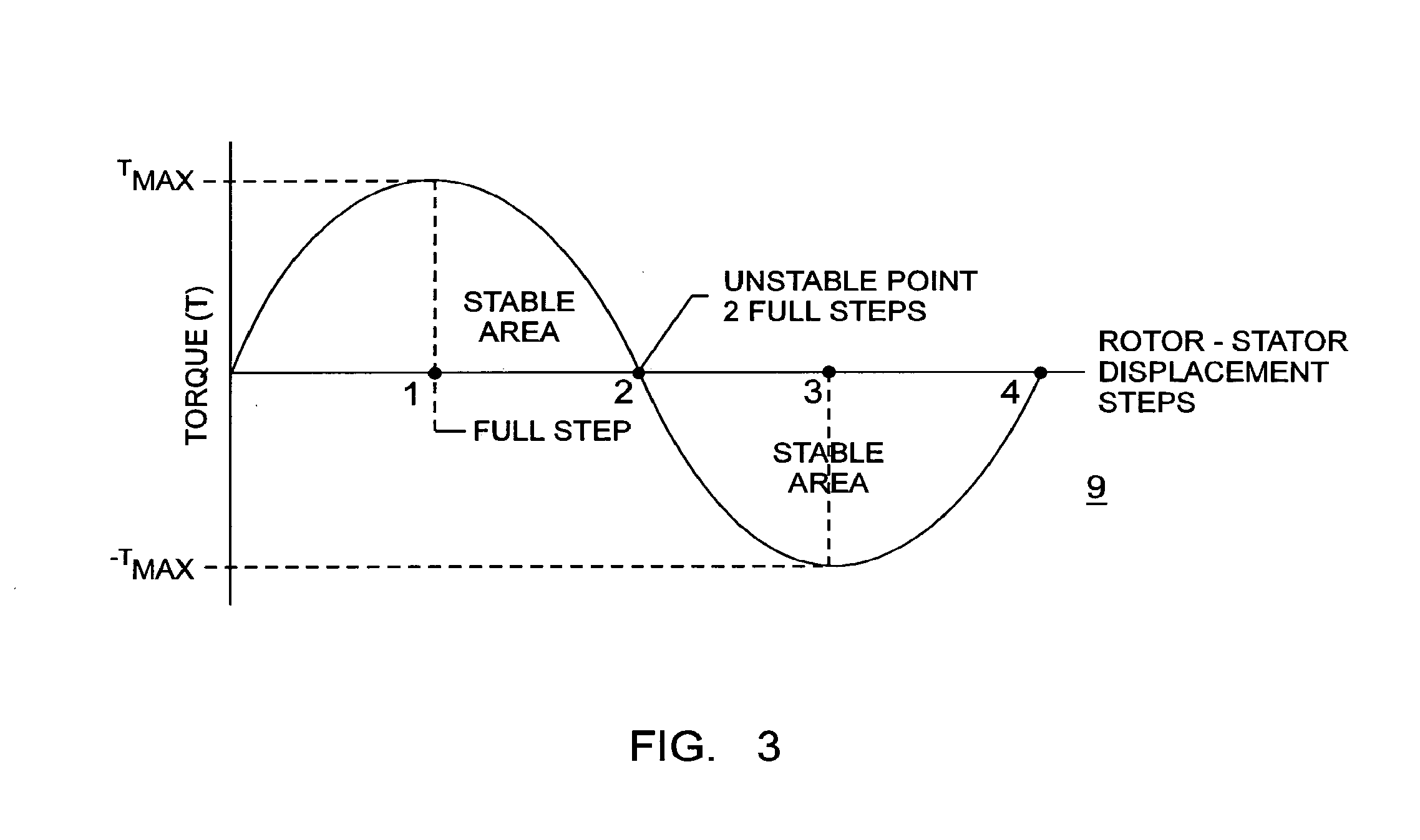Method and apparatus for eliminating stall and cogging in multi-phase stepping motors
a multi-phase stepping motor and stepping motor technology, applied in the direction of electric programme control, dynamo-electric converter control, instruments, etc., can solve problems such as motor stall
- Summary
- Abstract
- Description
- Claims
- Application Information
AI Technical Summary
Benefits of technology
Problems solved by technology
Method used
Image
Examples
Embodiment Construction
[0017]Before referring to the circuit components of the invention, as shown in FIGS. 1 and 2, the following information shown in FIG. 3 is helpful to a better understanding of the invention.
[0018]FIG. 3 represents a stepper motor torque output waveform 9 as a function of the stepper motor-stepper motor stator displacement steps.
[0019]As shown in FIG. 3, a stepper motor produces maximum torque when the rotor is leading or lagging the stator by a full step.
[0020]When the rotor reaches a lead or lag equaling 2 full steps, the motor is in a very unstable state. If the rotor is allowed to approach a lead or lag equaling 2 full steps, the rotor may jump to the next stable position. If this occurs synchronism between the commanded commutation frequency and the actual rotor frequency may be lost.
[0021]To eliminate this possibility, the rotor must be kept in the stable region indicated wherein the rotor leads or lags the stator by or near one full step, whereby the motor will produce maximum...
PUM
 Login to View More
Login to View More Abstract
Description
Claims
Application Information
 Login to View More
Login to View More - R&D
- Intellectual Property
- Life Sciences
- Materials
- Tech Scout
- Unparalleled Data Quality
- Higher Quality Content
- 60% Fewer Hallucinations
Browse by: Latest US Patents, China's latest patents, Technical Efficacy Thesaurus, Application Domain, Technology Topic, Popular Technical Reports.
© 2025 PatSnap. All rights reserved.Legal|Privacy policy|Modern Slavery Act Transparency Statement|Sitemap|About US| Contact US: help@patsnap.com



